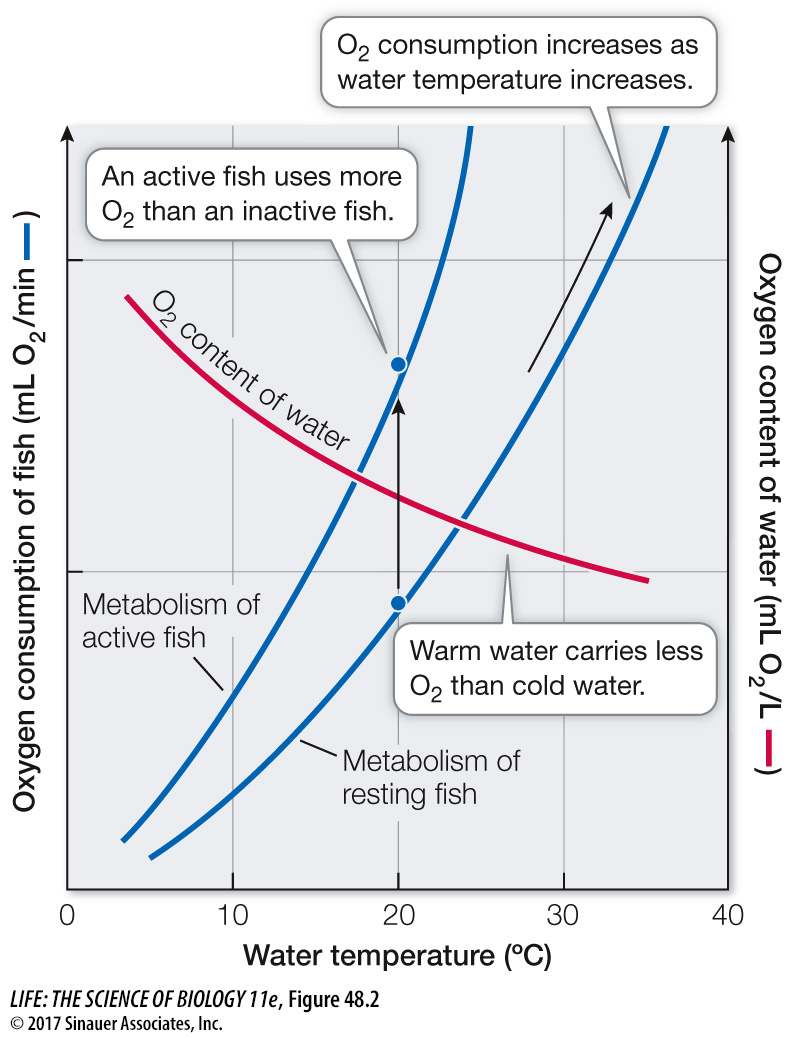Animals that use water for their respiratory exchange medium are in a double bind when environmental temperatures rise. Most water-breathing animals are ectotherms—their body temperatures are closely tied to the temperature of the water around them. As the water temperature rises, an ectotherm’s body temperature and metabolic rate rise (see Figure 39.8). Thus water breathers need more O2 as the water gets warmer (Figure 48.2). But as mentioned above, warm water holds less dissolved gas than cold water does. In addition, since a water-breathing animal performs work to move water across its gas exchange surfaces, it must expend more energy to breathe as water temperature rises. Therefore, as water temperature goes up, a water-breathing animal must extract more and more O2 from an environment that is increasingly O2 deficient, and a lower percentage of that O2 is available to support activities other than breathing.

